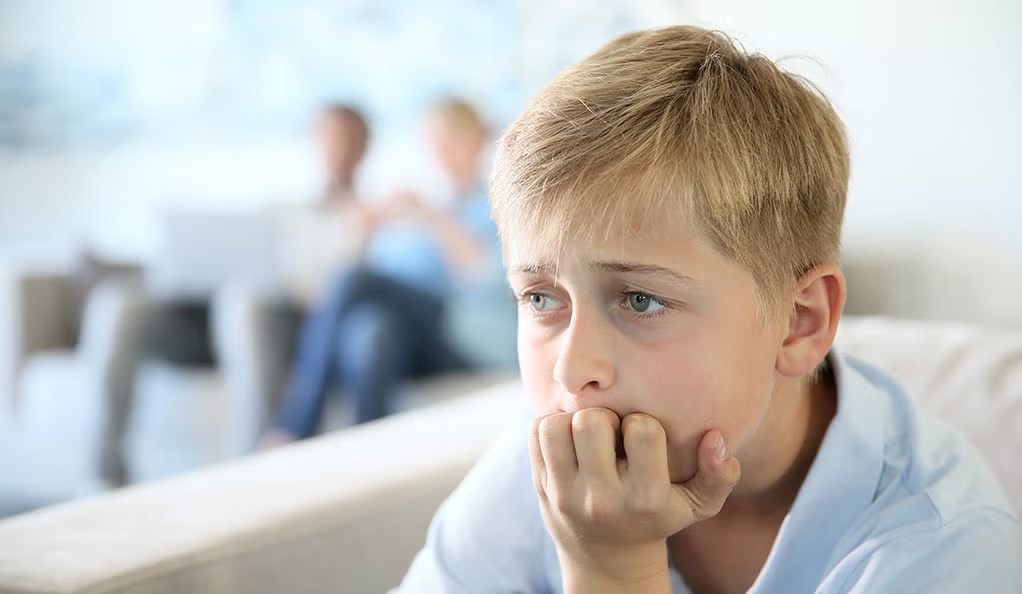A parent or caregiver’s support can be key to helping a child manage an anxiety disorder or to cope with an anxiety-inducing situation. Most parents are concerned about their child’s happiness but struggle when it comes to offering support.
When more than half of parents are unsure how to initiate conversations with their children, it can be difficult to manage their child’s anxiety.
But parents can help. There are simple techniques family members can use to help their child who has anxiety.
One method advocated by Jenna Riemersma, a Harvard-educated mental health expert, is the “Move Toward” approach. Riemersma is the founder and director of the Atlanta Center for Relational Healing.
How to Tell If a Child Has Anxiety
Anxiety is a common feeling for children. Big tests at school, changes to routines, or new environments, like a move or new school can cause feelings of anxiety. Children who’ve suffered a traumatic experience may also feel anxiety.
Feeling anxious at times can be a normal part of childhood.
But anxiety can evolve into a disorder when it interferes with them having a healthy everyday life. If the anxiety is strong, gets worse, or does not go away, or if it stops your child from doing things they enjoy, then it’s a problem. Anxiety disorders can harm children’s mental health. Anxiety disorders can lead children to become withdrawn and avoid things that may cause them to feel anxious.
The first step in helping your child with anxiety is recognizing anxiety symptoms. That can be difficult with anxiety disorders, as most people experience some anxiety in regular life. And adolescence is a normal time to have anxiety symptoms. The duration, intensity, or interference with daily life can point to a problem.
Common symptoms of an anxiety disorder can include restlessness, fatigue, difficulty concentrating, headaches, muscle pain, stomachaches, or trouble sleeping.
If these symptoms are intense, last for weeks, months, or longer, or get in the way of your child’s ability to learn, do things they enjoy, or go to school or work environments, they may have an anxiety disorder.
One method for helping manage anxiety is the “Move Toward” approach.
What is the Move Toward Approach?
The Move Toward Approach is a concept that can help children manage their anxiety.
It works by approaching anxiety with curiosity, compassion, courage, connection, and love. These are all transformative attributes that can help your child when they are having an anxious moment. Move Toward helps families approach anxiety head-on, rather than avoiding the signs and symptoms.
向前进 "有三个组成部分:
- 通知
- 通知
- 需要
通知
Notice means families recognize anxiety in their children as it’s happening. Parents should reserve judgment during this phase. They need only be curious about triggers and manifestations of anxiety.
Triggers are external actions or events that may have caused the anxiety. Manifestations are origins of where the feelings may be coming from.
At this stage, a parent or caregiver needs to recognize visible signs of distress. But they may also need to be on the lookout for less-obvious signs. Those could include the child feeling more irritable than normal or showing avoidance behaviors.
In this stage, you may ask yourself questions like:
- “What happened right before my child experienced their anxiety attack?”
- “Is this linked to a social event, or a school-related stress, or maybe an overly busy schedule?”
- “When and how does the anxiety manifest?”
- “Are there specific situations when their anxiety becomes apparent?”
The answer to these questions can help you find out what your child is trying to avoid or what’s behind the behavior pattern.
At this stage, try to notice how your child copes. Coping strategies can be positive, but there also may be negative behaviors. Negative behaviors can be signs your child is trying to cope with anxiety.
通知
Notify is the second part of the Move Toward approach. Notify means you focus on what your child’s anxiety is trying to notify them (or you) about.
Observe your child’s behavior and try to understand what it’s trying to tell you. When you know what their anxiety truly represents, you’ll be able to better understand your child’s fears and vulnerabilities.
Once you understand what your child’s anxiety is trying to tell you, you will be able to determine what it needs.
需要
Need is the last component of the Move Toward approach. Now, you can see what your child needs.
Your child might need a physical outlet to help relieve their anxiety. Or they may need reassurance from you against unreasonable expectations.
Need is all about supporting your child’s needs collaboratively. More than anything, your child needs connection, predictability, and safety at home. A child craves your love and empathy.
With these core emotional supports in place, your child can begin to manage their anxiety.
Additional resources for Child Anxiety:



